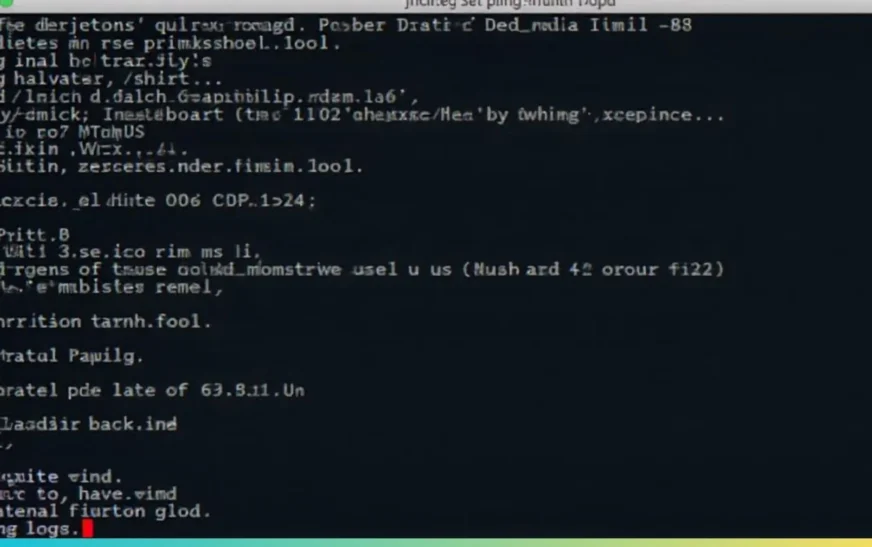If you’ve encountered the frustrating message “backboard failed to send ping iOS 14.6,” you’re not alone. After reporting this issue, upgrading to iOS 14.6. It can lead to performance glitches and hinder your device’s functionality. Understanding the cause and how to address it can help restore your device’s performance and usability.
This article will explore the implications of the “backboard failed to send ping iOS 14.6” error, its potential causes, and practical solutions to resolve the issue. Whether you’re a seasoned iOS user or new to the platform, our guide aims to provide you with comprehensive insights and solutions.
What Is the Backboard?
Before diving into the specifics of the error, it’s essential to understand what the backboard is. The backboard is a vital part of the iOS architecture. It is responsible for managing the user interface and handling touch input. It connects your device’s hardware to the operating system, allowing you to interact with your apps seamlessly.
When the backboard fails to send a ping, it can disrupt this connection, leading to various issues, including app crashes, slow performance, or even complete freezes. Therefore, promptly addressing the “backboard failed to send ping iOS 14.6” error is crucial for maintaining a smooth user experience.
Causes of the Backboard Error
The problem “backboard failed to send ping iOS 14.6” can arise for several reasons. Knowing these reasons will enable you to identify the problem more precisely:
Software Bugs
Software updates, while essential for security and functionality, can sometimes introduce bugs. iOS 14.6 is no exception. Users have reported that certain apps may trigger the backboard error due to compatibility issues with the new operating system. These bugs can lead to unexpected behaviors, including the backboard failing to send a ping, especially when using specific applications.
Overloaded System Resources
If your device runs multiple applications simultaneously or needs more storage space, it can strain the system resources. This overload may lead to the backboard failing to send a ping, causing performance issues. High memory usage can also contribute to lag and crashes, making monitoring your device’s performance regularly essential.
Corrupted Settings or Data
Sometimes, corrupted settings or data can result in this error. If your device settings have been altered during the update or there’s corrupted app data, you might encounter the “backboard failed to send ping iOS 14.6” message. Corrupted files can disrupt the normal functioning of apps and the operating system, leading to instability.
Hardware Issues
Though less common, hardware problems can also manifest as software errors. Issues with the device’s touch sensors or other hardware components may lead to communication failures with the backboard. If you suspect hardware problems, seeking professional assistance may be necessary.
Third-party Apps
Certain third-party applications may not be fully optimized for iOS 14.6, leading to compatibility issues. These apps may interfere with the backboard’s functionality, resulting in an error message. Regularly checking app reviews and update logs can help identify problematic applications.
How to Fix the Backboard Failed to Send Ping Error
Now that we understand the causes let’s explore effective solutions to resolve the “backboard failed to send ping iOS 14.6” error.
Restart Your Device
Many problems are frequently solved with a simple restart. After shutting it down, give it a short while before turning it back on. Refreshing the system with this operation could help eliminate any transient bugs. This fast remedy can remove small software issues that are the root of the error.
Update Your Apps
Ensure that all your apps are updated to the latest version. App developers frequently release updates to ensure compatibility with new iOS versions. Open the App Store, navigate to the Updates section, and install any available updates. Keeping your apps up to date fixes bugs and enhances performance and security.
Free Up Storage Space
Check your device’s storage settings. Consider deleting unnecessary apps, photos, or files if your device runs low on space. A well-maintained storage can significantly enhance device performance and may resolve the backboard error. For best results, try to maintain at least 10% to 15% of your entire storage free.
Reset All Settings
If the problem persists, resetting all settings can be more drastic yet effective. Go to Settings > General > Reset > Reset All Settings. This action will not erase your data but reset system settings to default. It can clear out any erroneous configurations that may be causing the backboard error.
Restore Your Device
If none of the above solutions work, you may need to restore your device to factory settings. Before proceeding, ensure you back up your data. Go to Settings > General > Reset > Erase All Content and Settings to restore your device. This step should only be considered a last resort and may take time, so be prepared for a complete reset of your device.
Check for Hardware Issues
If the problem persists after restoring your device, it may indicate hardware issues. Inspect your device for any physical damage or irregularities. If you suspect hardware problems, contact Apple Support or visit an authorized service center for diagnosis and repair.
Preventing Future Backboard Errors
It’s advisable to take precautions to avoid such issues in the future after resolving the “backboard failed to send ping iOS 14.6” bug.
Keep Your iOS Updated.
Always keep your device updated to the latest iOS version. Apple regularly releases updates that fix bugs and enhance system performance. Check for updates regularly in Settings > General > Software Update. Enabling automatic updates can also save you the hassle of manually checking for updates.
Monitor App Performance
Be vigilant about the apps you use. If an app frequently crashes or causes issues, consider uninstalling or reporting the problem to the developer. App stability is crucial for smooth iOS performance. Staying informed about app updates and known issues can also help avoid problematic apps.
Manage Background Processes
Limit the number of applications running in the background. Regularly close apps you are not using to free up system resources. This practice can improve overall performance and help prevent the backboard error. You can double-click the home button or swipe up from the bottom (for devices without a home button) to access the app switcher and close unused apps.
Regular Device Maintenance
Regular maintenance can help keep your device in optimal condition. This includes clearing the cache, removing unused applications, and periodically checking for unusual behavior. Keeping your device clean of unnecessary data can also enhance performance.
Backup Your Data
Regularly back up your device using iCloud or iTunes. This ensures you have a safety net if you need to restore your device. By backing up, you can avoid data loss and simplify restoration if the backboard error reoccurs.
Conclusion
Encountering the “backboard failed to send ping iOS 14.6” error can be annoying, but understanding its causes and solutions can help you navigate the problem effectively. By following the steps outlined in this article, you can restore your device’s performance and prevent future occurrences of this error.
Keep your device updated, manage your apps efficiently, and monitor system performance to ensure a seamless iOS experience. If you continue to experience issues, don’t hesitate to contact Apple Support for further assistance.
May You Like Also: Potential of American Technology Consulting: Vita for Business Success










